Type of Treatment
The effectiveness of treatment based on the principles of Applied Behavior Analysis (ABA) has been confirmed and proven by a large body of research (Evidence-Based Practice – EBP). Moreover, early behavioral intervention allows to achieve significant progress in the area of cognitive, social, and emotional functioning of a child with ASD. The crucial element is creating a suitable environment for learning and better functioning. It can be achieved through systematic and comprehensive treatment from teachers and family alike, which is why the cooperation of the child’s family is so important. However, we need to remember that “more” does not always mean “better.” Unanimous research shows that a focused program based on the principles of ABA is more effective than equally as intensive, but varied treatment (using different types of treatment, or the so-called “eclectic approach”). The vast majority of techniques qualified as effective in scientific publications have their basis in the behavioral approach.
Parents about treatment at IWRD
Behavior analysis is a science covering behavior and any variables that influence it. One branch of this discipline is Applied Behavior Analysis (ABA), which introduces the rules set and described during laboratory research to the natural environment in which the behavior occurs (Bear, Wolf, & Rislay 1968). Its principles serve as a basis for effective teaching of children with autism spectrum disorders (and not only). Let us decipher its seemingly enigmatic name by explaining some of the characteristics of this science:
![]() Applied – the researched phenomena are directly related to issues significant to the whole society or its members.
Applied – the researched phenomena are directly related to issues significant to the whole society or its members.
![]() Behavioral – it requires a precise measurement of actual behavior to be treated, and proof that it is indeed the behavior of the subject and not the observer.
Behavioral – it requires a precise measurement of actual behavior to be treated, and proof that it is indeed the behavior of the subject and not the observer.
![]() Analytic – the researcher should have control over the occurrence of a given behavior or the lack of it (Bear, Wolf, & Rislay 1968, after Kozłowski, 1999).
Analytic – the researcher should have control over the occurrence of a given behavior or the lack of it (Bear, Wolf, & Rislay 1968, after Kozłowski, 1999).
Below you will find the example links to sources confirming the effectiveness of ABA treatment:
How we teach
Motivational systems
Successful treatment is possible only with a properly applied individualized motivational system. Unfortunately, we often find that what serves as a reinforcer for typically developing children does not constitute a reward for children with autism spectrum disorders. A child with an autism spectrum disorder may not enjoy praise and recognition from adults or peers. The reason for that lies in serious deficits in the area of social skills and presents a significant challenge in treatment. It requires the teacher to take a special approach to each child in order to create an individualized motivational system.
In our treatment, we use various motivational systems, such as:
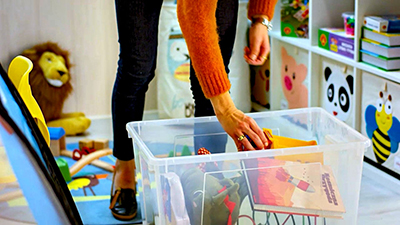
Direct rewards
The beginning of treatment is very important. It will decide on whether the child wants to cooperate with the teacher or parent and, as a result, if effective treatment is possible at all. Rewards are present in the daily life of everyone, and typically developing children receive them frequently. Children on the autism spectrum should also be rewarded as often as possible, with rewards that reinforce them and motivate them to continue learning.
You can learn more about using rewards in treatment from episode 8 of the online training series “15 Minutes for Treatment” available at www.15minutesfortreatment.com and chapter 8 of the book Skuteczna terapia dziecka z autyzmem (A. Budzińska, GWP 2020) – the book is only in polish language.
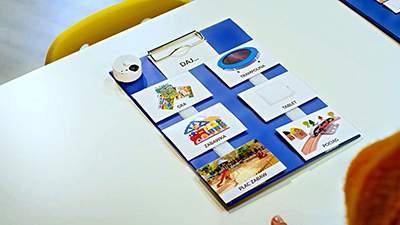
Choice boards
By using a choice board, we teach the child the skill of choosing interesting objects or activities. Rewards chosen by children are the most attractive to them. This allows us to keep the child fully motivated, which is a main factor determining the effectiveness of treatment.
You can learn more about choice boards from episode 9 of the online training series “15 Minutes for Treatment” available at www.15minutesfortreatment.com and chapter 9 of the book Skuteczna terapia dziecka z autyzmem (A. Budzińska, GWP 2020) – the book is only in polish language.
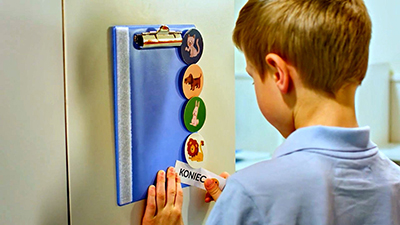
Token reinforcement system
Children are not always rewarded immediately for a performed activity, finished task, or correct answer – sometimes, they have to wait. A token reinforcement system will help us with “delaying” the reward by using generalized conditioned reinforcers to fill in the gap between the target behavior and the backup reinforcer.
You can learn more about token reinforcement systems from episode 10 of the online training series “15 Minutes for Treatment” available at www.15minutesfortreatment.com and chapter 10 of the book Skuteczna terapia dziecka z autyzmem (A. Budzińska, GWP 2020) – the book is only in polish language.
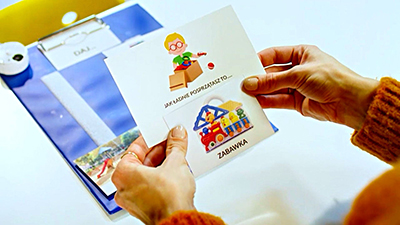
Behavioral contracts
A behavioral contract is an agreement which the student and the teacher have to conclude before performing a given activity or task. A behavioral contract gives a precise definition of what the child needs to do to receive a specific reward. Although we do not always realize it, a behavioral contract is a natural way for adults to express their expectations towards children.
You can learn more about behavioral contracts from episode 10 of the online training series “15 Minutes for Treatment” available at www.15minutesfortreatment.com and chapter 10 of the book Skuteczna terapia dziecka z autyzmem (A. Budzińska, GWP 2020) – the book is only in polish language.
Teaching techniques
In our work, we use various teaching techniques, such as:
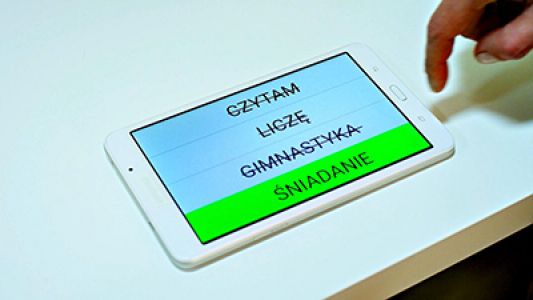
Activity schedules
An activity schedule is a set of pictures or words which serve as a hint for the schedule’s user to perform a sequence of activities or specific tasks. The goal of teaching children with autism to use activity schedules is to enable them to perform tasks or activities without direct hints and prompts from parents or teachers (Dr. M. McClannahan, Dr. P. Krantz, 2010).
You can learn more about using activity schedules in treatment from episode 19 of the online training series “15 Minutes for Treatment” available at www.15minutesfortreatment.com and chapter 19 of the book Skuteczna terapia dziecka z autyzmem (A. Budzińska, GWP 2020) – the book is only in polish language or in the book Activity Schedules for Children with Autism: Teaching Independent Behavior (Lynn E. McClannahan, 2011).
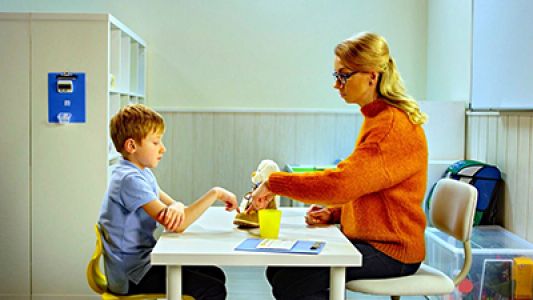
Discrete trial training
This technique aims to teach specific skills, such as: attention focus, eye contact, speech development, and more advanced social skills. By using this method, we divide the behavior into functional units (trials) and teach them one by one.
You can learn more about using discrete trial training in treatment from episode 22 of the online training series “15 Minutes for Treatment” available at www.15minutesfortreatment.com and chapter 22 of the book Skuteczna terapia dziecka z autyzmem (A. Budzińska, GWP 2020) – the book is only in polish language.
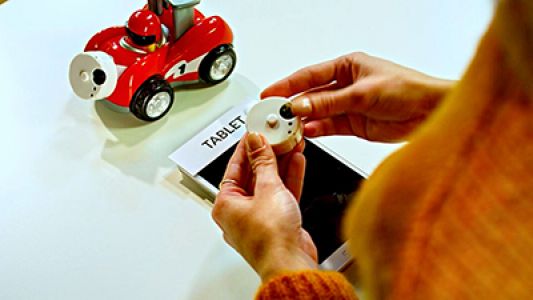
Scripts and script fading
A script is a written or recorded word, phrase or sentence which helps the child with autism to begin or continue a conversation. Scripts should be adjusted to the student’s functioning level: if the child cannot read, you should use an audio script. Scripts are introduced once the child has mastered all required verbal imitation skills.
You can learn more about scripts and script fading from episode 20 of the online training series “15 Minutes for Treatment” available at www.15minutesfortreatment.com and chapter 20 of the book Skuteczna terapia dziecka z autyzmem (A. Budzińska, GWP 2020) – the book is only in polish language or in the book Teaching Conversation to Children With Autism: Scripts And Script Fading (Lynn E. McClannahan, Patricia J. Krantz, 2011).
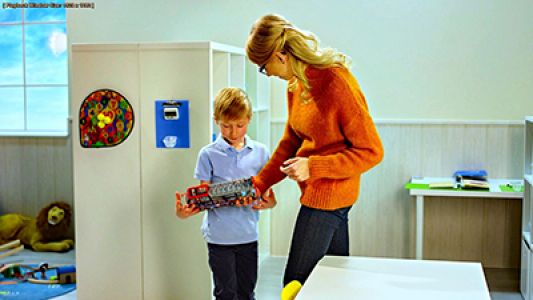
Incidental teaching
Other names for this technique are situational teaching, environmental teaching, or the Natural Language Paradigm. Incidental teaching is based on the child’s natural motivation to receive objects or perform activities and is used to develop speech. In this technique, the teacher waits for the child to start a conversation on a certain topic, and then responds in a way which makes such interactions more likely in the future.
You can learn more about incidental teaching from episode 21 of the online training series “15 Minutes for Treatment” available at www.15minutesfortreatment.com and chapter 21 of the book Skuteczna terapia dziecka z autyzmem (A. Budzińska, GWP 2020) – the book is only in polish language.
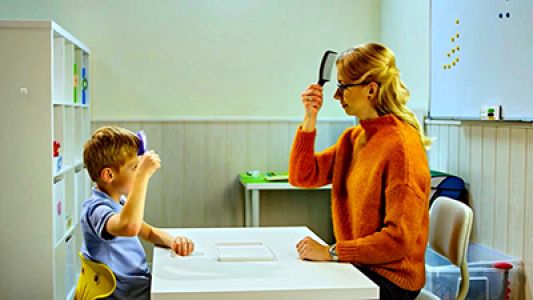
Video modeling
Video modeling is a form of teaching based on imitation skills. It uses a video recording of a person who shows the child how to perform a task. The student first watches the video attentively, and then tries to precisely imitate the modeled activity.
You can learn more about video modeling from episode 18 of the online training series “15 Minutes for Treatment” available at www.15minutesfortreatment.com and chapter 18 of the book Skuteczna terapia dziecka z autyzmem (A. Budzińska, GWP 2020) – the book is only in polish language.



